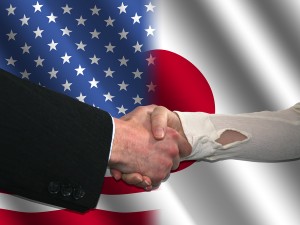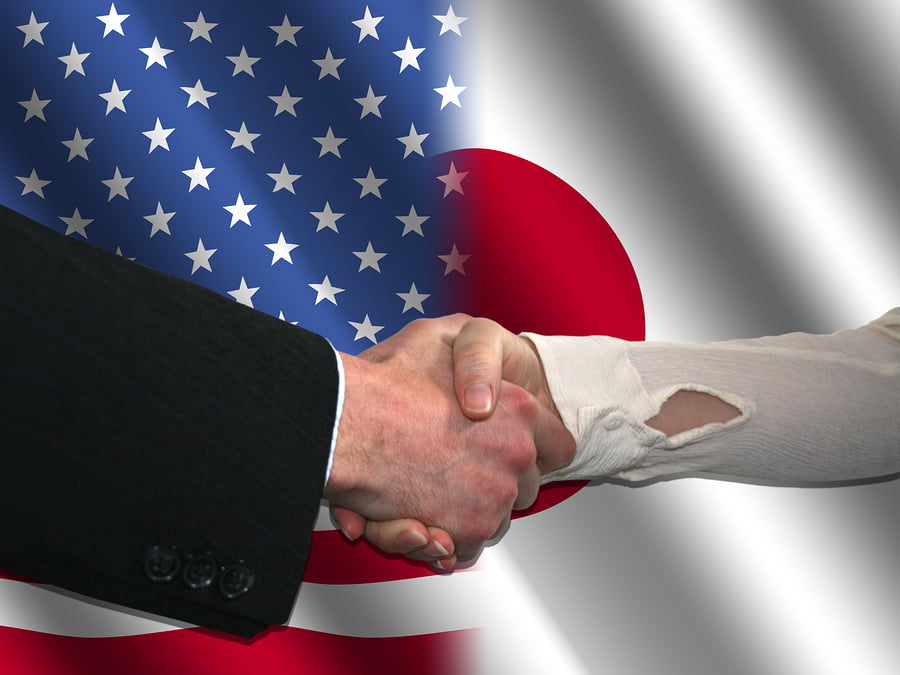2012-09-24 By Richard Weitz
Despite recent efforts to enhance international cooperation on defense industrial issues, American companies that attempt to enter the Japanese defense market directly continue to complain about such recurring problems as bureaucratic impediments, language barriers, and the limited availability of post-sale repair and maintenance services.
As a result of the Kokusana policy and other practices, the Japanese procurement process gives domestic arms suppliers a series of advantages over foreign firms.
The Kokusana policy has limited the number of available product lines in which foreign companies can compete successfully to those in which they can provide technologies not available to Japanese firms.

In the markets for small arms and basic military equipment, sectors in which Japanese companies already possess the requisite manufacturing technologies, foreign firms remain excluded regardless of how much lower their contract bids are compared to their Japanese competitors.
Even in other sectors, foreign companies typically find it easier to partner with Japanese firms, with their superior knowledge of the Japanese acquisition process, rather than try to sell to the Japanese government directly.
U.S. defense companies see Japanese companies as both potential partners and potential competitors.
As partners, the Americans can identify inefficient Japanese practices that the U.S. companies would like to see changed; however, U.S. firms want to avoid transforming Japanese firms into more formidable competitors.
These concerns lead U.S. companies to insist on robust measures to protect source codes and other sensitive data related to transferred military technologies. U.S. firms typically decline the most leading edge technology to the Japanese (e.g., the F-16 rather than the F-22), a practice that yields additional revenue from already sunk R&D expenditures without much risk of losing third-party markets do to Japan’s export controls on defense sales. Joint production of the F-35 could change this situation.
Despite the advantages Japan’s restrictive defense exports policy creates in terms of excluding potential Japanese competitors from third-party markets, American firms consider the policy problematic because it also impedes their ability to sell jointly developed military technologies and equipment to other countries.
In 2005, James J. Quinn—then Vice President for Missile and Space Defense at Northrop Grumman—explicitly endorsed Japan’s movement towards allowing more exports and sharing of defense-related technology and information.
In addition, U.S. firms want the Japanese government to reduce it’s “nurturing” of Japanese defense contractors and allow for more foreign access to Japan’s defense procurement market and its military-related technologies.
In 2003, the U.S.-Japan Industry Forum for Security Cooperation (IFSEC)—established in 1997 by the U.S. DoD and the JDA to facilitate bilateral defense industrial cooperation between American and Japanese defense contractors—recommended increased industry communication, more flexible export policies, and improved intellectual property protection.
In terms of seeking access to Japanese defense-related technologies, U.S. firms want the same level of access to research in Japan that Japanese companies enjoy to research accomplished in American universities and other U.S. R&D centers.
In July 2004, the Keidanren called on the government to reevaluate its arms export ban, citing its impediment to the defense sector’s development.
This statement represented the third time since 1995 that the Keidanren had spoken out against the ban. On this occasion, the Keidanren was especially concerned about Japanese companies being disqualified from participation in joint development projects, in particular the 13-nation development of the Joint Strike Fighter, which later was designated the F-35.
In a briefing to the JDA, the Defense Production Committee of Keidanren listed a variety of benefits from partnering with the United States:
- “Acquisition of advanced technology”
- “Reduced risk of research and development”;
- “Increased trust in the alliance”
- “Interoperability”
- “Efficient research and development” and
- “Mutual access to the finest technology in both countries”
Japanese officials want the United States to more readily share military technology, especially in the area of licensing.
They argue that because Japan and the United States use the same major weapons systems, the United States should adopt a more transparent licensing system.
In 2007, Defense Minister Fumio Kyuma told the media that, “We are hoping the U.S. would be more willing to disclose and provide the technology” for defense items since such transfers would obviate Japan’s need to research, develop, and manufacture its own equipment, most likely at a higher cost.
In this regard, Japanese defense policy makers want the United States to relax laws that prevent the transfer of classified technologies to Japan.
One such example is the “Obey amendment,” added to the 1998 Defense Appropriation Act, which prohibits sales of the F-22A to foreign countries.
Besides depriving Japanese firms of access to valuable U.S. defense technology, Japanese business and government leaders believe that this kind of restrictive legislation inhibits the Japan’s procurement and co-production options.
On the negative side of the ledger, the established Japanese defense companies oppose widespread direct sales of finished armaments from U.S. firms to the Japanese military. Some Japanese defense companies also fear that a focus of procurement efficiency could undermine their existing profitable relationships with their Japanese military clients.
In general, the heads of these companies, as opposed to the directors of their defense divisions, are most open to reforming the current Japanese defense procurement system. They tend to have a more comprehensive perspective and better appreciate the value of competition for strengthening the overall health of the Japanese business sector by creating incentives and opportunities to increase efficiency, decrease costs, and improve the level of technology available to Japanese manufacturers.
One reason for the difference in perspective is that, whereas the largest U.S. defense companies such as Lockheed Martin and Northrop Grumman British Aerospace depend on defense sales for more than 90 percent of their total revenue, the large Japanese companies active in the indigenous defense market—such as Mitsubishi Heavy Industries, Kawasaki Heavy Industries, Mitsubishi Electric, and NEC—normally derive ten percent or less of their total revenue from defense sales.


